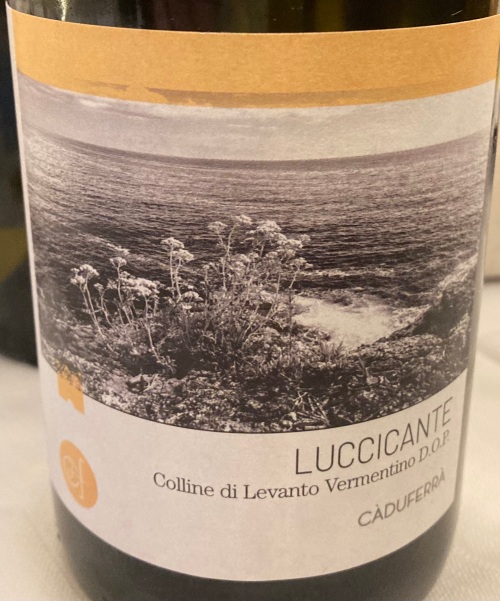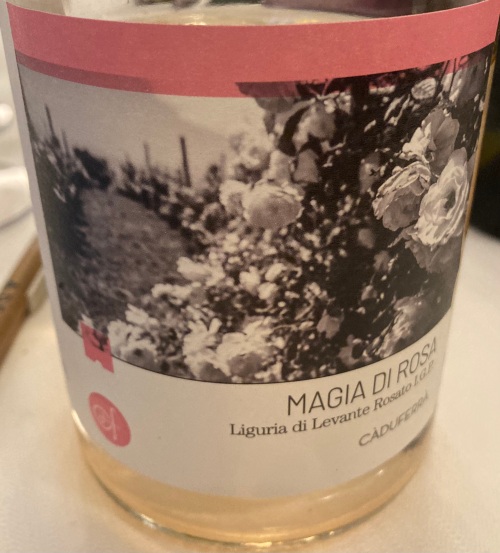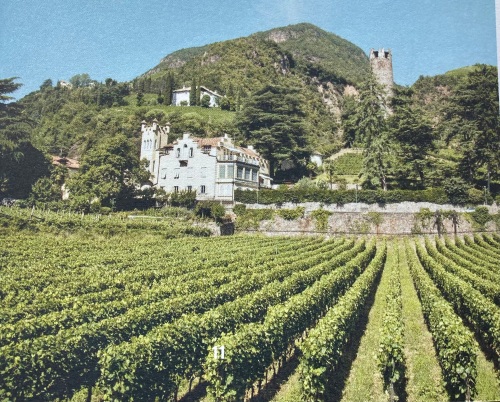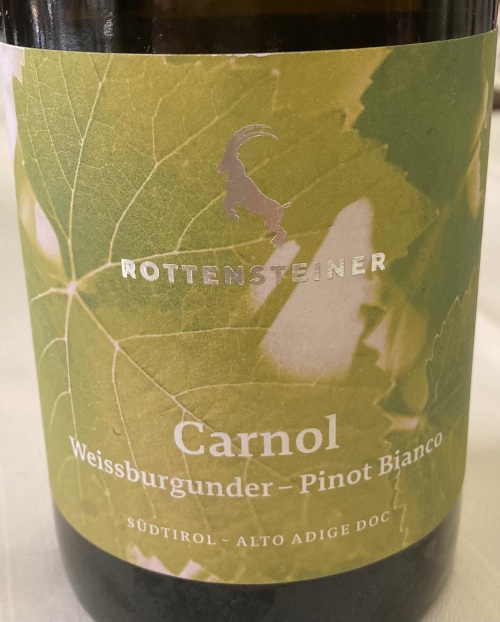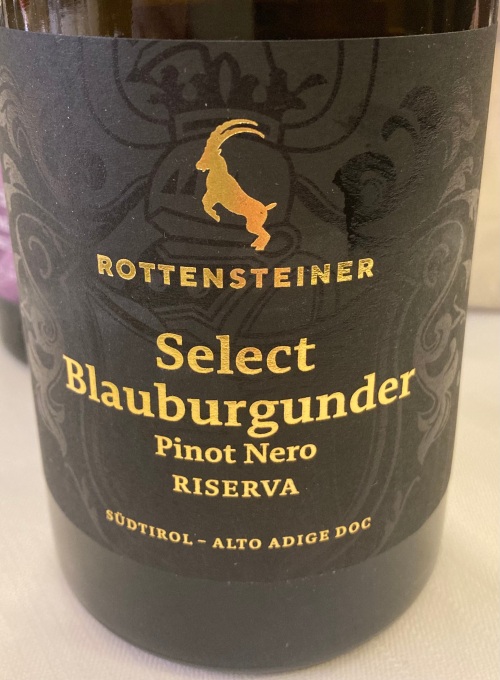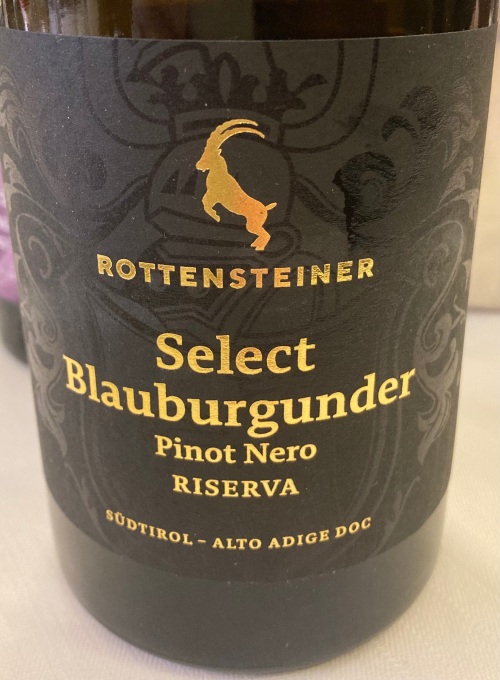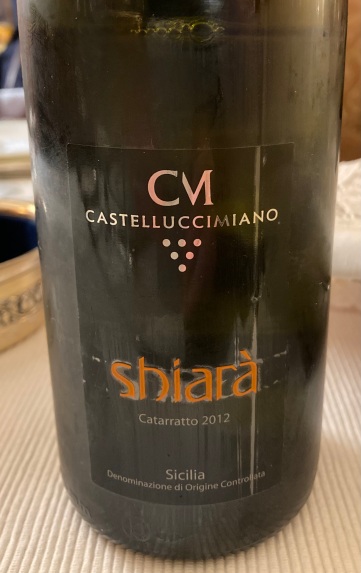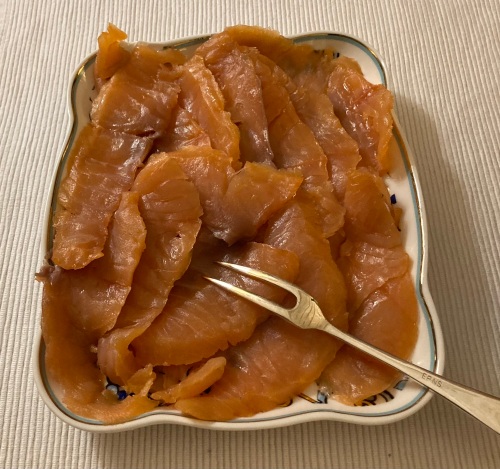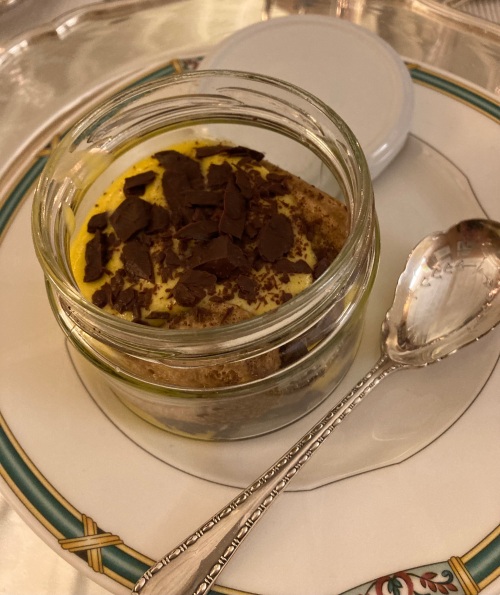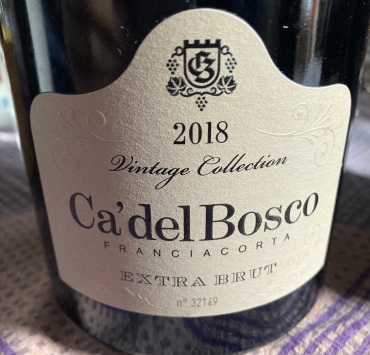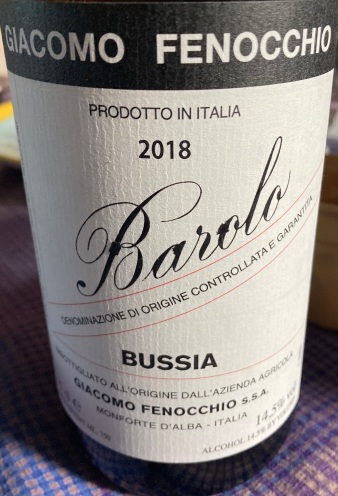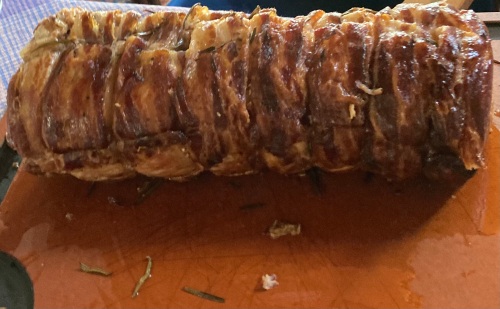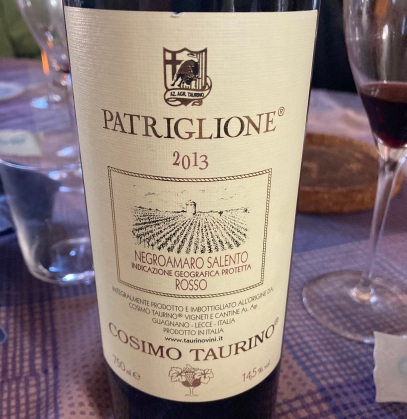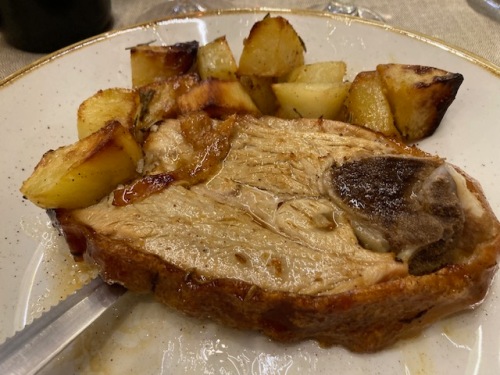When Federica Schir (federica@federicaschir-pr.com) heard that Michele and I were in Rome a few weeks ago, she invited us to meet her at Tenuta Casenuove in the Chianti Classico Zone. We took the train from Rome to Florence and met Federica at the station. The winery is located in the heart of Tuscany near the town of Panzano, between Florence and Siena.
At the winery we met Alessandro Fonseca, an agronomist who is the General Manager and Wine Director of the estate. He told us that the history of the property goes back to the 1600’s but the modern story begins in 2015 when it was acquired by Philippe Austruy, an entrepreneur, art collector, and wine lover who also owns prestigious wineries in France and Portugal.
 The vineyards
The vineyards
He undertook a complete renovation of the estate which comprises 120 hectares of rolling hills. Vines, woodlands and olive groves coexist in this part of Tuscany celebrated for its biodiversity. There are 30 hectares of vineyards at about 450 meters which are dedicated to the production of red wine.
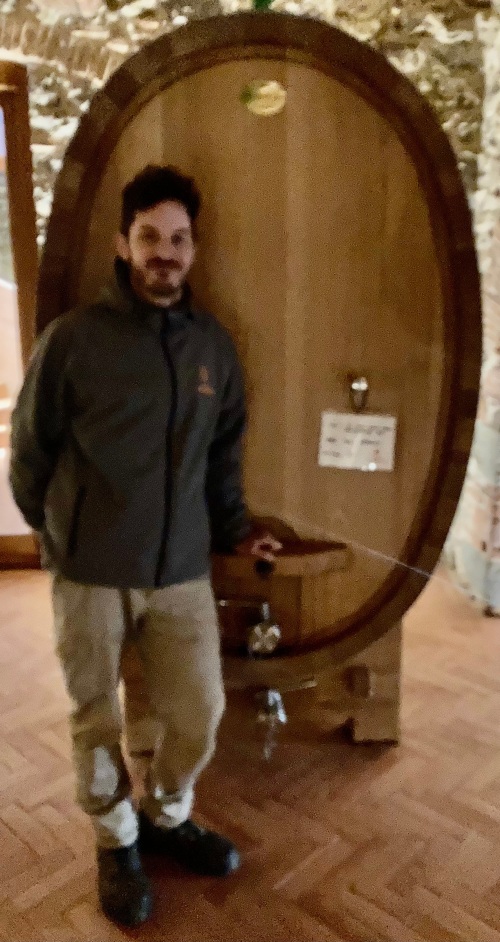
Cosimo Casini in the Cellar
Alessandro hired enologist Cosimo Casini to direct all of the vineyards, and cellar master Maria Sole Zoli. Together they are a very talented team. Cosimo took us on a tour of the vineyards and spoke about the terroir and explained why certain grape varieties were planted in specific soil. In the cellar he said they produce a very traditional Chianti Classico Classico but use the latest innovative techniques to make the wine.
 He pointed to a tank the size of a barrique made of steel, not wood. He said it imparts all of the elements of barriques without adding any wood flavor.
He pointed to a tank the size of a barrique made of steel, not wood. He said it imparts all of the elements of barriques without adding any wood flavor.
The wines of Tenuta Casenuove
 ZIIK Spumante Rosé Charmat Metodo Extra Brut Bio made from 100% Sangiovese. Limestone clay soil of marine origin. The exposure is south/southwest. Harvest takes place the last week of August and the first week of September. The grapes are harvested manually, according to a rigorous selection from the areas most suited to sparkling wine. Once in the cellar the grapes are crushed by soft pressing and constantly monitored with several tastings to understand the exact moment of the end of the pressing. This is to guarantee only the best, most delicate, fresh and aromatic part of the pressing, free from vegetable astringencies and excessive hardness. This is followed by a cold static decantation of the grape must obtained without the use of any additives. After that, alcoholic fermentation takes place in a controlled temperature steel tank, respecting all the organic production protocols. The wine is bottled in March the year following the harvest after 4 months on the lees.
ZIIK Spumante Rosé Charmat Metodo Extra Brut Bio made from 100% Sangiovese. Limestone clay soil of marine origin. The exposure is south/southwest. Harvest takes place the last week of August and the first week of September. The grapes are harvested manually, according to a rigorous selection from the areas most suited to sparkling wine. Once in the cellar the grapes are crushed by soft pressing and constantly monitored with several tastings to understand the exact moment of the end of the pressing. This is to guarantee only the best, most delicate, fresh and aromatic part of the pressing, free from vegetable astringencies and excessive hardness. This is followed by a cold static decantation of the grape must obtained without the use of any additives. After that, alcoholic fermentation takes place in a controlled temperature steel tank, respecting all the organic production protocols. The wine is bottled in March the year following the harvest after 4 months on the lees.
 Chianti Classico DOCG 2020 made from 90% Sangiovese, 6% Cannaiolo and 4% Merlot. The soil is a mix of limestone and clay dating back to the Cretaceous Oligocene era with the presence of galestro and sandstone coming from the disintegration of the “Macigno del Chianti” rock. Harvest is the second week of September to the first ten days in October. In the cellar, the bunches are sorted and then the grapes. Vinification is in raw concrete tanks filled by gravity. The grapes are gently placed in the tanks without using mechanical pumps that could damage the grapes.
Chianti Classico DOCG 2020 made from 90% Sangiovese, 6% Cannaiolo and 4% Merlot. The soil is a mix of limestone and clay dating back to the Cretaceous Oligocene era with the presence of galestro and sandstone coming from the disintegration of the “Macigno del Chianti” rock. Harvest is the second week of September to the first ten days in October. In the cellar, the bunches are sorted and then the grapes. Vinification is in raw concrete tanks filled by gravity. The grapes are gently placed in the tanks without using mechanical pumps that could damage the grapes.
 Cosimo said this step is essential to manage the “whole grape” winemaking and it affects the entire architectural design of the winery and the purchase of sorting machines. Once fermentation has started, pumping over and delestage are carried out during the entire period, up to 25 days. A vertical press is used for racking and pressing.
Cosimo said this step is essential to manage the “whole grape” winemaking and it affects the entire architectural design of the winery and the purchase of sorting machines. Once fermentation has started, pumping over and delestage are carried out during the entire period, up to 25 days. A vertical press is used for racking and pressing.
The wine is aged 6 to 8 months in a concrete tank and in 45 HL Slavonian oak barrels and 18 months in bottled before it is released. The wine has floral notes with hints of black and red fruit, violets and maraschino cherry.
Cosimo said 2020 was a fairly regular vintage. It was complicated, however, by the lockdown and the restrictions imposed to protect against the Covid-19 epidemic which greatly complicated normal wine management.
Chianti Classico DOC 2019 Riserva made from 100% Sangiovese. The soil is a mix of limestone clays of marine origin with the presence of galestro. Vinification is the same as above. The wine is aged in 25HL Slavonian casks and 500 liter tonneaux of first and second passage for 12 months and in bottle for 24/30 months before release. It has flavors and aromas raspberry and blackberry with balsamic notes, floral hints and pleasant acidity.
 Chianti Classico DOCG 2019 Gran Selezione made from 100% Sangiovese. The soil is a mix of limestone and clay dating back to the Cretaceous Oligocene era with the presence galestro of particular selections from the Sopratorre-Pozzo vineyard. Harvest takes place the first week of October. Once fermentation has started, pumping over and delestage are carried out during the time in the tank up to 30 days. A vertical press is used for racking and pressing. The wine is aged for 20 months in large Slavonian oak barrels and in bottle for 36 months before release. This is an elegant complex wine with hints of violets, wild berries, cherries, tobacco leaf with a very long finish and pleasing aftertaste. The wine can age for 10 years or more. Cosimo said “this wine is the maximum expression of the Sangiovese from Panzano, a true expression of the terroir of our estate.”
Chianti Classico DOCG 2019 Gran Selezione made from 100% Sangiovese. The soil is a mix of limestone and clay dating back to the Cretaceous Oligocene era with the presence galestro of particular selections from the Sopratorre-Pozzo vineyard. Harvest takes place the first week of October. Once fermentation has started, pumping over and delestage are carried out during the time in the tank up to 30 days. A vertical press is used for racking and pressing. The wine is aged for 20 months in large Slavonian oak barrels and in bottle for 36 months before release. This is an elegant complex wine with hints of violets, wild berries, cherries, tobacco leaf with a very long finish and pleasing aftertaste. The wine can age for 10 years or more. Cosimo said “this wine is the maximum expression of the Sangiovese from Panzano, a true expression of the terroir of our estate.”
Cosimo said 2019 was a very balanced vintage. There were rains that allowed an excellent water reserve in the soils but did not create problems for fungus diseases.
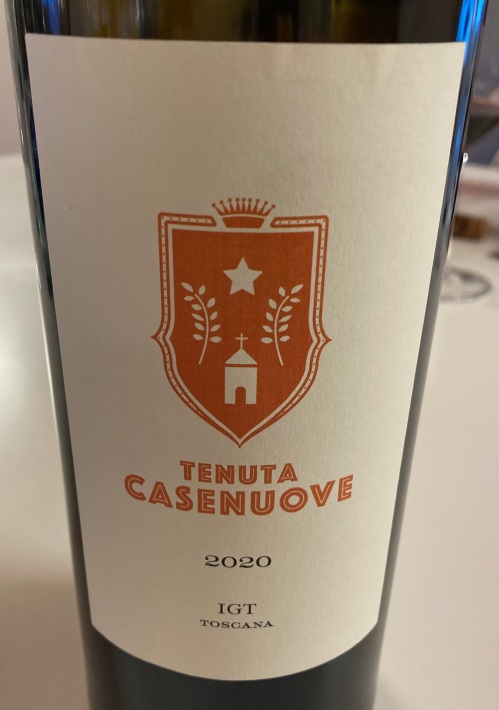 IGT Toscana 2020 Tenuta Casenuove made from 60% Sangiovese, 35% Merlot, 3% Cabernet Sauvignon and 2% Cabernet Franc. Cosimo said the plot selection was chosen because it is characterized by evident outcrops of galestro, less fertile and suited to quality viticulture. Harvest is from the middle of September to the first 10 days of October. Vinification is in vitrified cement tanks at a controlled temperature. Once fermentation has has started pumping over and delestage are carried out for up to 30 days. A vertical press is used for racking and pressing. The wine is aged for 12 months in cement tanks, large Slavonian oak barrels and barriques for 12 months, then in bottle for 30 months before release. This is a big rich, complex wine, dense and concentrated with ripe black and red fruit, spice snd a touch of mocha. It is a wine with great aging potential and could age for 20 years.
IGT Toscana 2020 Tenuta Casenuove made from 60% Sangiovese, 35% Merlot, 3% Cabernet Sauvignon and 2% Cabernet Franc. Cosimo said the plot selection was chosen because it is characterized by evident outcrops of galestro, less fertile and suited to quality viticulture. Harvest is from the middle of September to the first 10 days of October. Vinification is in vitrified cement tanks at a controlled temperature. Once fermentation has has started pumping over and delestage are carried out for up to 30 days. A vertical press is used for racking and pressing. The wine is aged for 12 months in cement tanks, large Slavonian oak barrels and barriques for 12 months, then in bottle for 30 months before release. This is a big rich, complex wine, dense and concentrated with ripe black and red fruit, spice snd a touch of mocha. It is a wine with great aging potential and could age for 20 years.
After our tour, we enjoyed a tasting of the wines, followed by dinner with Federica, Alessandro and Cosimo in the dining room of the beautifully decorated main house. Conversation ranged from activities in the Chianti Classico Zone, olive oil production, the delicious food and future plans for Tenuta Casenuove. We also learned that Alessandro is produces an excellent dessert wine on his own property.
Tenuta Casenuove also produces an excellent extra virgin olive oil which tasted during dinner.
Dinner
 Our dinner began with fettuccine with a sausage ragu made by the chef of Tenuta Casenuove.
Our dinner began with fettuccine with a sausage ragu made by the chef of Tenuta Casenuove.

Next we had a typical beef stew of the region served with mashed potatoes. Our meal was matched perfectly with the wines we had previously sampled.
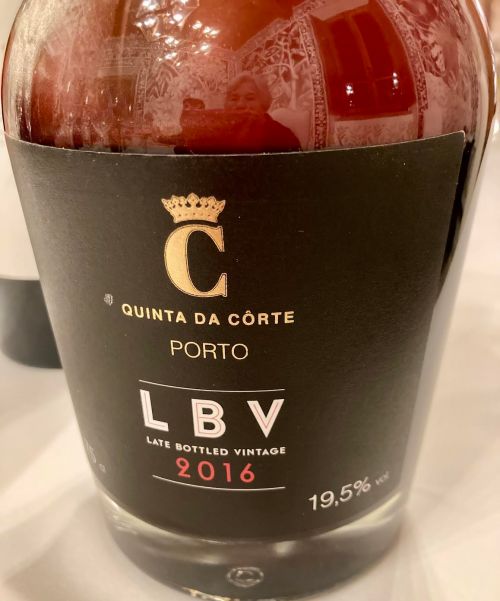 With our dessert, Michele had a glass of port from one of Tenuta Casenuove’s owner’s estates in Portugal, Quinta da Côrte Porto LBV 2016, and I had a very traditional grappa made from Sangiovese.
With our dessert, Michele had a glass of port from one of Tenuta Casenuove’s owner’s estates in Portugal, Quinta da Côrte Porto LBV 2016, and I had a very traditional grappa made from Sangiovese.
 Dessert was a classic crostata di marmellata filled with homemade jam made with an assortment of berries.
Dessert was a classic crostata di marmellata filled with homemade jam made with an assortment of berries.
 We stayed overnight in one of the lovely appointed rooms in the main building.
We stayed overnight in one of the lovely appointed rooms in the main building.
We left early the next day and on the way back to Florence I had a chance to reflect on how much I had enjoyed the wines of Tenuta Casenuove and how pleased I was to see them making Chianti Classico wines in the traditional way.
 According to tradition the grapes are harvested by hand from the Finoccio vineyard. The workers carry the boxes of grapes on their shoulders through the holm oak woods to the access point closest to the road.
According to tradition the grapes are harvested by hand from the Finoccio vineyard. The workers carry the boxes of grapes on their shoulders through the holm oak woods to the access point closest to the road. IGT Toscana Bianco “Scoglio Nero” 2019 made from 100% Ansonica, Soil is granitic sands dating back to a million years ago. Mediterranean climate characterized by hot and very dry summers, very little rainfall especially during the growing season of the vine. Harvest takes place the first ten days of September.
IGT Toscana Bianco “Scoglio Nero” 2019 made from 100% Ansonica, Soil is granitic sands dating back to a million years ago. Mediterranean climate characterized by hot and very dry summers, very little rainfall especially during the growing season of the vine. Harvest takes place the first ten days of September.




















